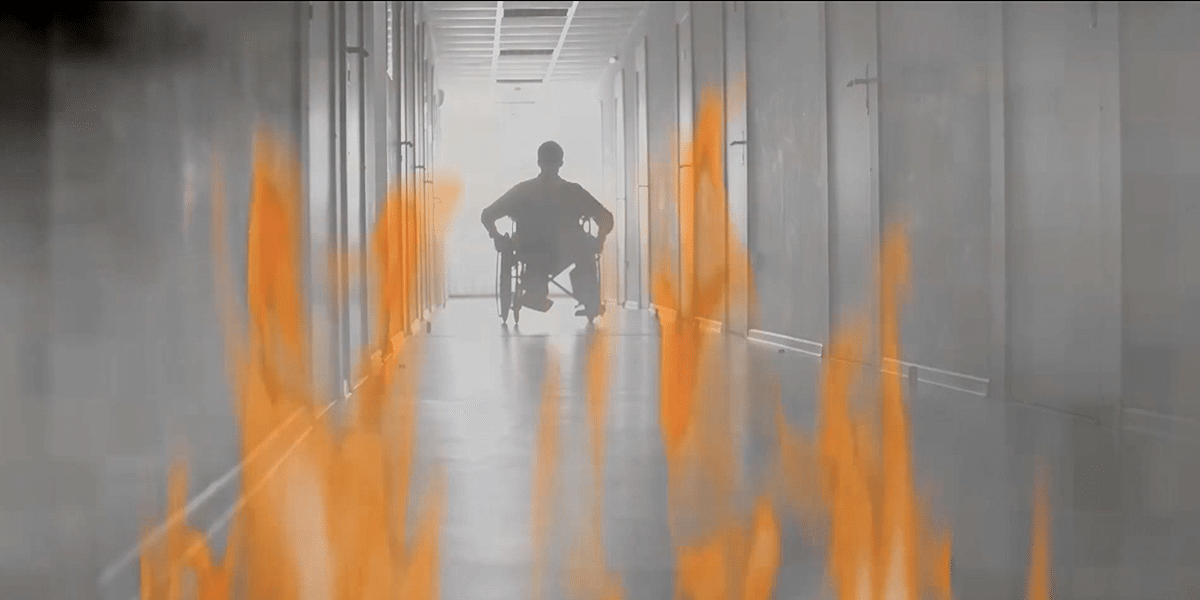 Challenging the Status Quo: Building Classifications and Fire Safety in SDA It is imperative to challenge the status quo regarding what is perceived as permitted building classifications versus what is genuinely safe for Specialist Disability Accommodation (SDA). In this video, please note the time the smoke alarm is activated and the time until flashover. Now ask yourself. How many people could you evacuate? This applies to all four categories of SDA to varying extents, from High Physical Support, where participants rely heavily on carers due to mobility impairments, to Improved Liveability and Robust, where participants may have a sensory orRead More
Challenging the Status Quo: Building Classifications and Fire Safety in SDA It is imperative to challenge the status quo regarding what is perceived as permitted building classifications versus what is genuinely safe for Specialist Disability Accommodation (SDA). In this video, please note the time the smoke alarm is activated and the time until flashover. Now ask yourself. How many people could you evacuate? This applies to all four categories of SDA to varying extents, from High Physical Support, where participants rely heavily on carers due to mobility impairments, to Improved Liveability and Robust, where participants may have a sensory orRead More Is the Fire Safety of NDIS Participants Being Compromised
 Challenging the Status Quo: Building Classifications and Fire Safety in SDA It is imperative to challenge the status quo regarding what is perceived as permitted building classifications versus what is genuinely safe for Specialist Disability Accommodation (SDA). In this video, please note the time the smoke alarm is activated and the time until flashover. Now ask yourself. How many people could you evacuate? This applies to all four categories of SDA to varying extents, from High Physical Support, where participants rely heavily on carers due to mobility impairments, to Improved Liveability and Robust, where participants may have a sensory orRead More
Challenging the Status Quo: Building Classifications and Fire Safety in SDA It is imperative to challenge the status quo regarding what is perceived as permitted building classifications versus what is genuinely safe for Specialist Disability Accommodation (SDA). In this video, please note the time the smoke alarm is activated and the time until flashover. Now ask yourself. How many people could you evacuate? This applies to all four categories of SDA to varying extents, from High Physical Support, where participants rely heavily on carers due to mobility impairments, to Improved Liveability and Robust, where participants may have a sensory orRead More 
 Spanish philosopher George Santayana famously said, “Those who cannot remember the past are condemned to repeat it.” It seems that with the implementation of specialist disability accommodation, we have failed to learn from history regarding the safety of People with disability. Fire traps are being built for people with disability. What is the History of Kew Cottages View the Kew Cottages history in brief In April 1996, a devastating fire at Kew Cottages, a residential facility for individuals with intellectual disabilities, tragically claimed the lives of nine men. The fire spread rapidly and violently through their unit. This raises an important
Spanish philosopher George Santayana famously said, “Those who cannot remember the past are condemned to repeat it.” It seems that with the implementation of specialist disability accommodation, we have failed to learn from history regarding the safety of People with disability. Fire traps are being built for people with disability. What is the History of Kew Cottages View the Kew Cottages history in brief In April 1996, a devastating fire at Kew Cottages, a residential facility for individuals with intellectual disabilities, tragically claimed the lives of nine men. The fire spread rapidly and violently through their unit. This raises an important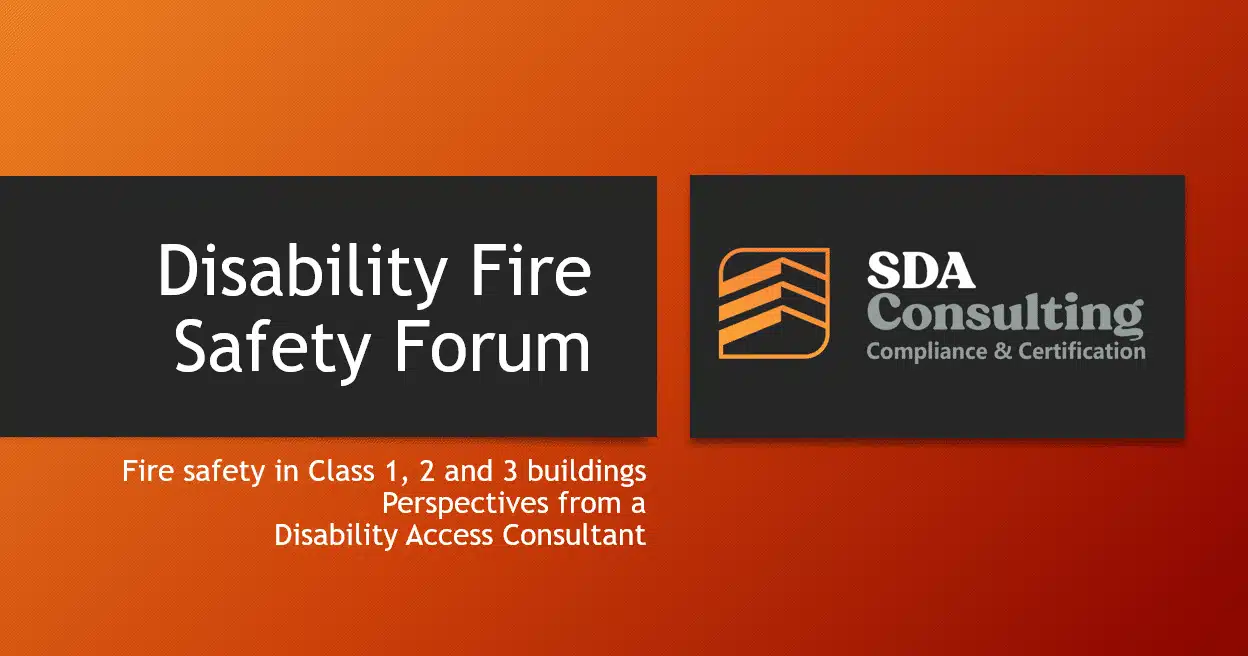 Fire safety in SDA Class 1, 2 and 3 buildings Perspectives from a Disability Access Consultant In late 2024, Fire Rescue Victoria and the NDIS Quality and Safeguards Commission invited me to present at the Disability Fire Safety Forum, which was dedicated to enhancing fire safety measures for individuals with disabilities. The event featured a diverse lineup of keynote speakers, including the Minister for the NDIS and the Honorable Bill Shorten MP. Following the speeches, attendees participated in a series of practical workshops designed to address the unique challenges and risks associated with fire safety for People with disability. The
Fire safety in SDA Class 1, 2 and 3 buildings Perspectives from a Disability Access Consultant In late 2024, Fire Rescue Victoria and the NDIS Quality and Safeguards Commission invited me to present at the Disability Fire Safety Forum, which was dedicated to enhancing fire safety measures for individuals with disabilities. The event featured a diverse lineup of keynote speakers, including the Minister for the NDIS and the Honorable Bill Shorten MP. Following the speeches, attendees participated in a series of practical workshops designed to address the unique challenges and risks associated with fire safety for People with disability. The For centre-based early childhood education and care services, providing a safe environment for the babies and children in their care is paramount, both in their everyday operations, and also in emergency situations where an evacuation may be required. Safely evacuating infants and children is challenging within any setting – however, the risks and challenges are greatly amplified when the evacuation takes place in a multi-storey building. The National Quality Framework (NQF) sets out a range of regulatory requirements specific to Class 9b early childhood centres on upper levels of multi-storey buildings to assist providers operating in such buildings. In this
For centre-based early childhood education and care services, providing a safe environment for the babies and children in their care is paramount, both in their everyday operations, and also in emergency situations where an evacuation may be required. Safely evacuating infants and children is challenging within any setting – however, the risks and challenges are greatly amplified when the evacuation takes place in a multi-storey building. The National Quality Framework (NQF) sets out a range of regulatory requirements specific to Class 9b early childhood centres on upper levels of multi-storey buildings to assist providers operating in such buildings. In this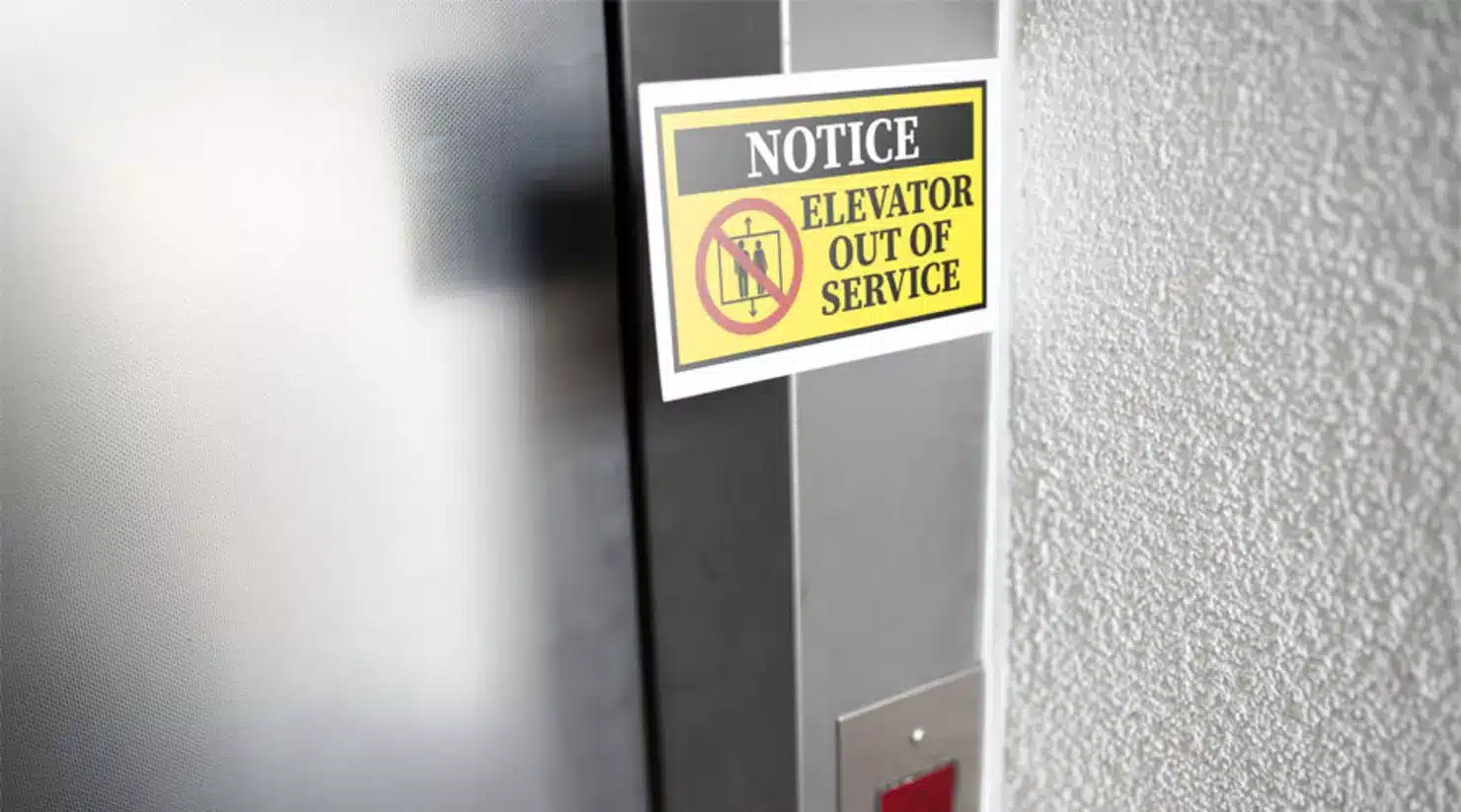 How would you feel being trapped in your hotel room over Christmas? Amber Furlong checked into her accessible hotel room in Noosa on 24 December 2023 as part of a family holiday. Her room was on the 3rd floor of her hotel wing, serviced by a single lift. On 26 December, Amber discovered whilst heading for a swim for therapy that the single lift servicing her floor had broken down following severe storms. Reminiscent of a couple of lines from the Eagle’s song, Hotel California, her experience worsened. After requesting a ground-floor accessible apartment at check-in that ironically was vacant,
How would you feel being trapped in your hotel room over Christmas? Amber Furlong checked into her accessible hotel room in Noosa on 24 December 2023 as part of a family holiday. Her room was on the 3rd floor of her hotel wing, serviced by a single lift. On 26 December, Amber discovered whilst heading for a swim for therapy that the single lift servicing her floor had broken down following severe storms. Reminiscent of a couple of lines from the Eagle’s song, Hotel California, her experience worsened. After requesting a ground-floor accessible apartment at check-in that ironically was vacant,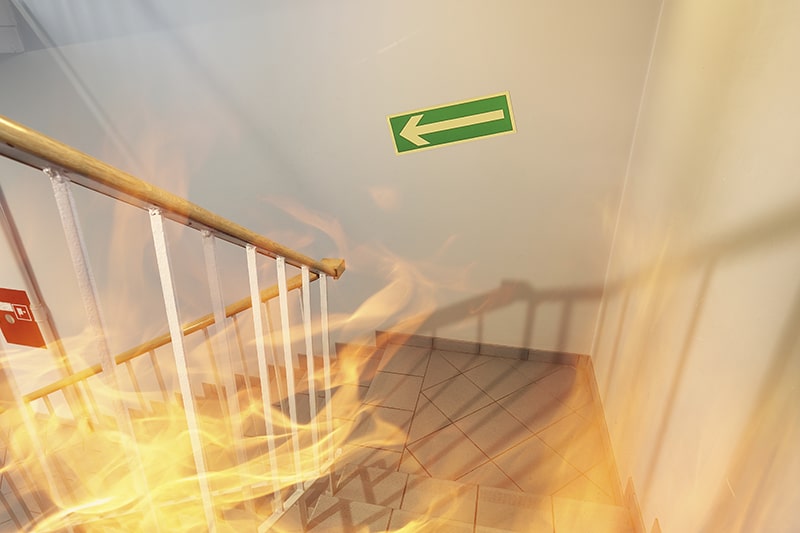 A Personal Emergency Evacuation Plan—also known as PEEP—is vital for keeping people safe in an emergency situation. And it’s even more important to have plans in place for disabled people, particularly those who require additional support in an evacuation situation. Around 1 in 5 Australians live with disability—and many of these disabilities can be invisible and dynamic, so it’s important to not assume someone’s access needs based on their appearance. What is a Personal Emergency Evacuation Plan (PEEP)? A Personal Emergency Evacuation Plan (PEEP) is an escape plan for people with additional support needs in the event of an emergency.
A Personal Emergency Evacuation Plan—also known as PEEP—is vital for keeping people safe in an emergency situation. And it’s even more important to have plans in place for disabled people, particularly those who require additional support in an evacuation situation. Around 1 in 5 Australians live with disability—and many of these disabilities can be invisible and dynamic, so it’s important to not assume someone’s access needs based on their appearance. What is a Personal Emergency Evacuation Plan (PEEP)? A Personal Emergency Evacuation Plan (PEEP) is an escape plan for people with additional support needs in the event of an emergency.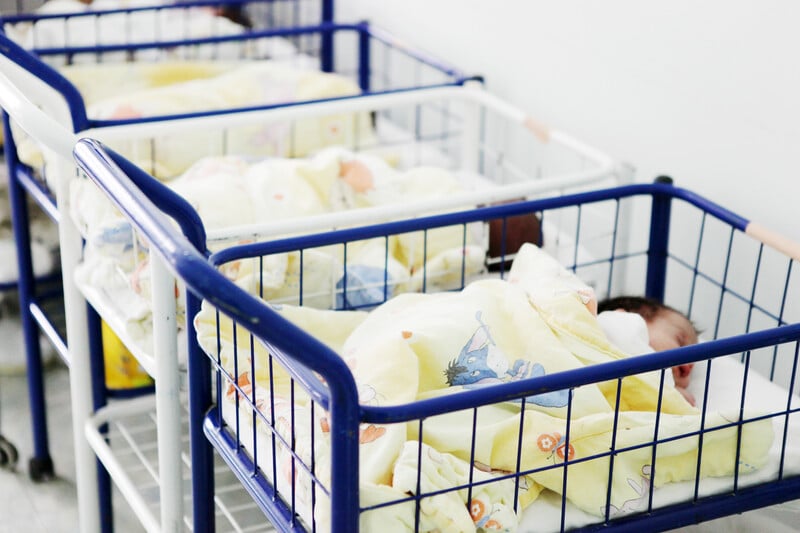 The Baby Mover Newborn evacuation apron is made of solid, flame-retardant material. This fabric makes our evacuation apron extra suitable for emergencies, like cases of fire or flooding. The BABY MOVER® makes hands-free evacuation of babies possible, making it especially ideal for newborn evacuation from hazardous situations within hospitals or childcare centres. The newborn babies can be put in the pockets on the front and either side of the evacuation apron. The reinforced seams of the evacuation apron pockets do not need extra support and are made of tear-resistant material. The pockets’ strength, safety and security allow the person carrying
The Baby Mover Newborn evacuation apron is made of solid, flame-retardant material. This fabric makes our evacuation apron extra suitable for emergencies, like cases of fire or flooding. The BABY MOVER® makes hands-free evacuation of babies possible, making it especially ideal for newborn evacuation from hazardous situations within hospitals or childcare centres. The newborn babies can be put in the pockets on the front and either side of the evacuation apron. The reinforced seams of the evacuation apron pockets do not need extra support and are made of tear-resistant material. The pockets’ strength, safety and security allow the person carrying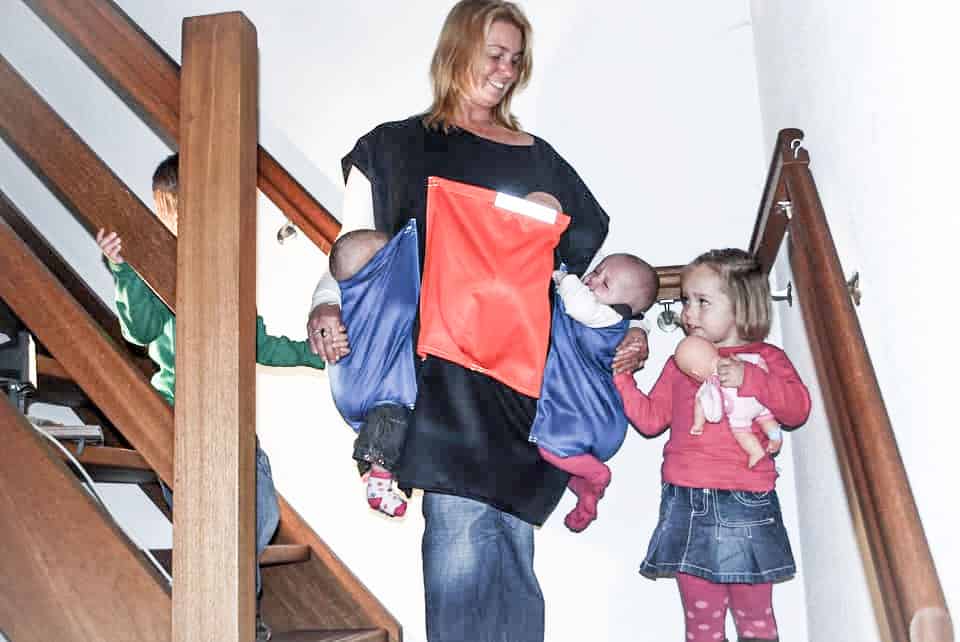 Safety is a critically important aspect of a childcare centre. The gathering of toddlers, babies and infants, in general, makes the place highly dependent in an emergency. Since infants depend on care, the need for extra help and a transparent evacuation plan is required. Safe and quick evacuation can’t be missed in hazardous situations within childcare centres, meaning a clear overview should be fully documented within a Group Emergency Evacuation Plan (GEEP) to indicate how the adults manage babies and toddlers during the rapid emergency evacuation. In this GEEP, both the actions and devices should be noted. Attention should be
Safety is a critically important aspect of a childcare centre. The gathering of toddlers, babies and infants, in general, makes the place highly dependent in an emergency. Since infants depend on care, the need for extra help and a transparent evacuation plan is required. Safe and quick evacuation can’t be missed in hazardous situations within childcare centres, meaning a clear overview should be fully documented within a Group Emergency Evacuation Plan (GEEP) to indicate how the adults manage babies and toddlers during the rapid emergency evacuation. In this GEEP, both the actions and devices should be noted. Attention should be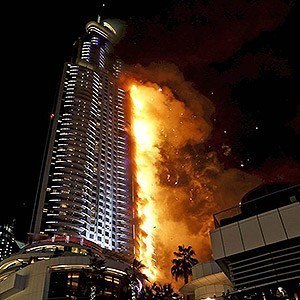 To be an inclusive community, opportunities must be provided for everyone to be able to participate in all facets of life, including work opportunities, for people with disability. However, whilst the Building Code of Australia (BCA) mandates accessibility for people with disability, it is silent on how to evacuate people with disability in an emergency such as fire. What if you use a wheelchair and work in a multi-story building and there is a fire and lifts cannot be used? Not having a building code with prescriptive requirements to evacuate people with disability in 2022, I believe, is negligent by
To be an inclusive community, opportunities must be provided for everyone to be able to participate in all facets of life, including work opportunities, for people with disability. However, whilst the Building Code of Australia (BCA) mandates accessibility for people with disability, it is silent on how to evacuate people with disability in an emergency such as fire. What if you use a wheelchair and work in a multi-story building and there is a fire and lifts cannot be used? Not having a building code with prescriptive requirements to evacuate people with disability in 2022, I believe, is negligent by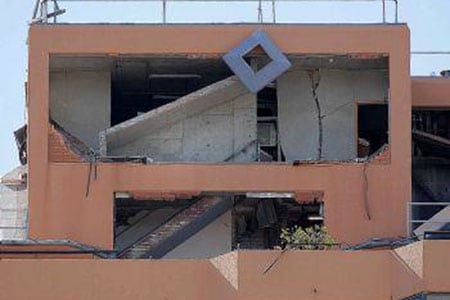 Gas Explosion Takes Out Lifts. On 30 March 2009 a gas explosion occurred on level 29 in the plant room area of a residential high-rise building in Spring Street, Bondi Junction, where two plumbers were working on a gas-fired water heater. There was no ongoing fire, but the blast wave travelled down a riser and blew in most of the doors on levels 23 and above, including the fire stair and lift doors, making the lifts inoperable. Walls were blown out on the top two levels and there were cracks in the stairwell at level 26, which progressively worsened on
Gas Explosion Takes Out Lifts. On 30 March 2009 a gas explosion occurred on level 29 in the plant room area of a residential high-rise building in Spring Street, Bondi Junction, where two plumbers were working on a gas-fired water heater. There was no ongoing fire, but the blast wave travelled down a riser and blew in most of the doors on levels 23 and above, including the fire stair and lift doors, making the lifts inoperable. Walls were blown out on the top two levels and there were cracks in the stairwell at level 26, which progressively worsened on